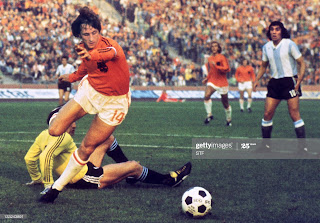The Greatest Film ever made?
A timeless classic, an
unparalleled masterpiece, a visionary pioneer. Though often unheard or casually
ignored by many movie fans of today, to almost all directors, critics,
journalists unanimously, Citizen Kane is the most valuable piece of cinematic
art. Why? Simply because it is Citizen Kane, a film that has
single-handedly exerted greater influence in the history of cinema than
anything else. Sounds too unreal? Well, by the time you finish reading this, it
won’t anymore! (I hope!)
This 1941 black & white movie
directed by Orson Welles basically tells the story of world’s biggest
media tycoon, Charles Foster Kane (a fictional character very loosely based on
William Randolph Hearst)- his background, his rise to fame, his inevitable
fall, his melancholic end. It’s very, very tough to squeeze 80 years of a man’s
life into 2 hours, especially all the more so if that man never existed in the
real world. And Citizen Kane does just that; and that too in a groundbreaking
fashion. But it’s not about just what it did; it’s more about how it did that.
Welles
and screenwriter Herman Mankiewicz created the script in a unique narrative
style that follows a nonlinear structure meaning the events do not occur in
chronological order; a script-writing technique that was experimented
very limitedly in some silent era films, but wasn’t completely and successfully
introduced in any cinema before Citizen Kane. The story is presented through a
series of overlapping and timeline-breaking flashbacks at different parts of
Kane’s life, offering the viewer a scattered glimpse of his life establishing
his character as a complex enigma. The first vocal sound of the movie is Kane’s
dying word which ignites the mystery surrounding his life and death at the very
beginning; and throughout the whole movie, we see ourselves as the news
reporter who is trying to find any clue that solves Kane’s life and the true
significance behind his last word. To further the complexity, we get to get to
see Charles Kane from different perspectives through the eyes, words &
memories of several narrators- a genius stroke
of script-writing giving the effect of portraying a jigsaw puzzle
that is being slowly pitched together with the final piece ultimately revealed
at the end. Even then, the mystery never gets solved by the characters in the
film, rather only solved by the viewer. This symbolizes the idea behind the
first and last scene of the film where a “No Trespassing” sign is seen at the
gate of Mr. Kane’s mansion that tells the viewer that Kane’s life is a dark
secret that shouldn’t be told, but perhaps only understood through his own
eyes.
 |
When asked
where he got the confidence as a first-time director to direct a film so
radically different from contemporary cinema, Welles responded,
"Ignorance, ignorance, sheer ignorance—you know there's no confidence to
equal it. It's only when you know something about a profession, I think, that
you're timid or careful." Undoubtedly the most-studied film of all time,
Citizen Kane has influenced hundreds of directors including Francis Ford
Coppola, John Frankenheimer, Sergio Leone, Michael Mann, Ridley Scott, Martin
Scorsese, Steven Spielberg. Without Kane, there would have been no Vertigo. Its
cinematography has influenced virtually every movie that follows; its complex
biographical plot structure has paved the way for the likes of Lawrence of
Arabia, The Godfather, Raging Bull, There Will Be Blood; its non-linear
narrative style has been incorporated in Pulp Fiction, The Usual Suspects, Mulholland
Drive, The Machinist, Slumdog Millionaire, The Tree of Life, Gone Girl,
literally all movies of Christopher Nolan (most famously Memento, Inception,
The Prestige) and who knows how many else! You may not like Citizen Kane very
much; but rest assured, the films you do love are directly or indirectly indebted
to it, one way or another. And for all the people out there who are eager to
enter into film-making, this movie is a must, must and must watch; the best 120
minutes (or, much, much more!) of priceless lessons in cinema one can ever get.










Comments
Post a Comment